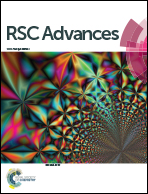First-principles study of nitrogen adsorption and dissociation on α-uranium (001) surface
Abstract
The adsorption and dissociation of nitrogen on the α-uranium (001) surface have been studied with a first-principles density functional theory (DFT) approach. The effects of strong 5f electron–electron correlation and spin–orbit coupling on the adsorption of nitrogen on the uranium (001) surface are also discussed. Different coverages of nitrogen atoms and different initial configurations of nitrogen molecules are considered on the uranium surface. The structural parameters and electronic states of nitrogen on the uranium surface are obtained. The calculated results indicate that nitrogen atoms are energetically favorable at the hollow1 sites. The nitrogen molecules adsorbed horizontally on the long-bridge site are found to dissociate completely, and the corresponding adsorption energies are about −4 eV. The electron structure of the most preferred adsorption configuration is investigated, and it is found that the adsorbed nitrogen atoms only seize electrons from the top-most uranium layer. Based on ab initio atomistic thermodynamics, the surface phase diagram for nitrogen adsorption on the α-uranium (001) surface is obtained and the initial stages of nitridation for the uranium surface are discussed.


 Please wait while we load your content...
Please wait while we load your content...